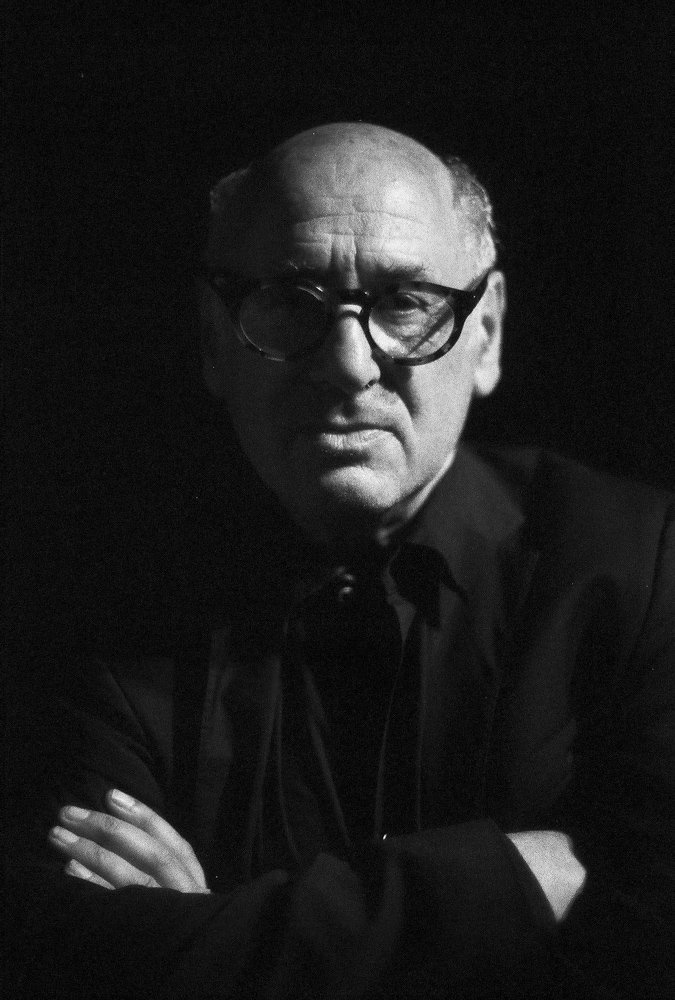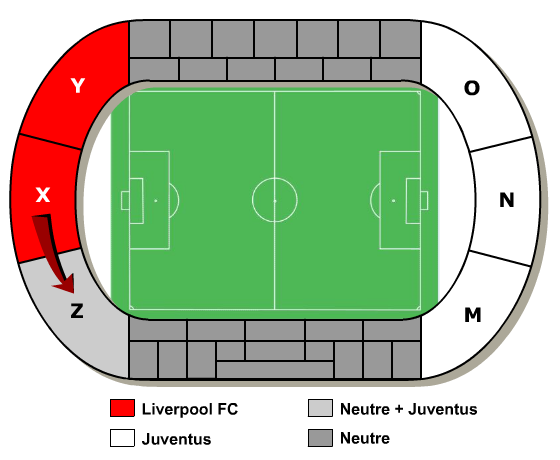|
Memorial (composition)
''Memorial'' is an epic funeral march-like piece, composed by Michael Nyman around 1984–1985. The work premiered on 15 June 1985.Michael Nyman. Liner notes. '' The Cook the Thief His Wife & Her Lover'' It was written to commemorate the deaths of 39 fans, almost all Italian, at the 1985 European Cup final between Liverpool and Juventus at the Heysel Stadium (also known as the Heysel Stadium disaster). The whole piece was performed just once. In 1989, Nyman began "reassigning" elements of ''Memorial'', as he often does with earlier work. The first appearance on a commercial recording was of the fifth movement, on the soundtrack of '' The Cook, the Thief, His Wife & Her Lover''. The piece incorporates and builds on a musical sequence from "What Power Art Thou”, an aria from the opera '' King Arthur'' by Henry Purcell. Releases The fifth movement appeared in '' The Cook, the Thief, His Wife & Her Lover'', and re-recorded versions appear on Michael Nyman Band's ''The Essential Mi ... [...More Info...] [...Related Items...] OR: [Wikipedia] [Google] [Baidu] |
Michael Nyman
Michael Laurence Nyman, Order of the British Empire, CBE (born 23 March 1944) is an English composer, pianist, libretto, librettist, musicologist, and filmmaker. He is known for numerous film soundtrack, scores (many written during his lengthy collaboration with the film director, filmmaker Peter Greenaway), and his multi-platinum The Piano (soundtrack), soundtrack album to Jane Campion's ''The Piano''. He has written a number of operas, including ''The Man Who Mistook His Wife for a Hat (opera), The Man Who Mistook His Wife for a Hat''; ''Letters, Riddles and Writs''; ''Noises, Sounds & Sweet Airs''; ''Facing Goya''; ''Man and Boy: Dada''; ''Love Counts''; and ''Sparkie: Cage and Beyond''. He has written six concerti, five string quartets, and many other chamber music, chamber works, many for his Michael Nyman Band. He is also a performing pianist. Nyman prefers to write opera over other forms of music. Early life and education Nyman was born in Stratford, London, Stratford ... [...More Info...] [...Related Items...] OR: [Wikipedia] [Google] [Baidu] |
Heysel Stadium Disaster
The Heysel Stadium disaster ( it, Strage dell'Heysel ; german: link=no, Katastrophe von Heysel ; french: Drame du Heysel ; nl, Heizeldrama ) was a crowd disaster that occurred on 29 May 1985 when mostly Juventus fans escaping from a breach by Liverpool fans were pressed against a collapsing wall in the Heysel Stadium in Brussels, Belgium, before the start of the 1985 European Cup Final between the Italian and English clubs. Thirty-nine people—mostly Italians and Juventus fans—were killed and 600 were injured in the confrontation. Approximately an hour before the Juventus–Liverpool final was due to kick off, Liverpool supporters charged at Juventus supporters and breached a fence that was separating them from a "neutral area". The cause of the rampage has been attributed by eyewitnesses to Liverpool fans who had been drinking heavily. Juventus fans ran back on the terraces and away from the threat into a concrete wall. Fans already standing near the wall were crushed; ev ... [...More Info...] [...Related Items...] OR: [Wikipedia] [Google] [Baidu] |
King Arthur (opera)
''King Arthur, or The British Worthy'' (Z. 628), is a semi-opera in five acts with music by Henry Purcell and a libretto by John Dryden. It was first performed at the Queen's Theatre, Dorset Garden, London, in late May or early June 1691. The plot is based on the battles between King Arthur's Britons and the Saxons, rather than the legends of Camelot (although Merlin does make an appearance). It is a Restoration spectacular, including such supernatural characters as Cupid and Venus plus references to the Germanic gods of the Saxons, Woden, Thor, and Freya. The tale centres on Arthur's endeavours to recover his fiancée, the blind Cornish Princess Emmeline, who has been abducted by his arch-enemy, the Saxon King Oswald of Kent. ''King Arthur'' is a "dramatick opera" or semi-opera: the principal characters do not sing, except if they are supernatural, pastoral or, in the case of Comus and the popular ''Your hay it is mow'd'', drunk. Secondary characters sing to them, usually as d ... [...More Info...] [...Related Items...] OR: [Wikipedia] [Google] [Baidu] |
Henry Purcell
Henry Purcell (, rare: September 1659 – 21 November 1695) was an English composer. Purcell's style of Baroque music was uniquely English, although it incorporated Italian and French elements. Generally considered among the greatest English opera composers, Purcell is often linked with John Dunstaple and William Byrd as England's most important early music composers. No later native-born English composer approached his fame until Edward Elgar, Ralph Vaughan Williams, Gustav Holst, William Walton and Benjamin Britten in the 20th century. Life and work Early life Purcell was born in St Ann's Lane, Old Pye Street, Westminster – the area of London later known as Devil's Acre, a notorious slum – in 1659. Henry Purcell Senior, whose older brother Thomas Purcell was a musician, was a gentleman of the Chapel Royal and sang at the coronation of King Charles II of England. Henry the elder had three sons: Edward, Henry and Daniel. Daniel Purcell, the youngest of the b ... [...More Info...] [...Related Items...] OR: [Wikipedia] [Google] [Baidu] |
Michael Nyman Band
The Michael Nyman Band, formerly known as the Campiello Band, is a group formed as a street band for a 1976 production of Carlo Goldoni's 1756 play, ''Il Campiello'' directed by Bill Bryden at the Old Vic. The band did not wish to break up after the production ended, so its director, Michael Nyman, began composing music for the group to perform, beginning with "In Re Don Giovanni", written in 1977. Originally made up of old instruments such as rebecs, sackbuts and shawms alongside more modern instruments like the banjo and saxophone to produce as loud a sound as possible without amplification, it later switched to a fully amplified line-up of string quartet, double bass, clarinet, three saxophones, horn, trumpet, bass trombone, bass guitar, and piano. This lineup has been variously altered and augmented for some works. History The band's first recorded album on a professional label was Nyman's second, the self-titled ''Michael Nyman'' (1981), which mostly comprised pieces writte ... [...More Info...] [...Related Items...] OR: [Wikipedia] [Google] [Baidu] |
The Essential Michael Nyman Band
''The Essential Michael Nyman Band'' is a studio album featuring a collection of music by Michael Nyman written for the films of Peter Greenaway and newly performed by the Michael Nyman Band. It is the seventeenth album release by Nyman. The album features liner notes by Annette Morreau, who describes the album as "a summation and digest of ten years of progress in the performance of music by a composer -- a composer with whom, so evidently, a group of friends and expert musicians intimately identify their total commitment, virtuosity, and joyous enthusiasm." As the works on the album were written as concert pieces before being transmuted into film music, some of the selections, particularly "Chasing Sheep Is Best Left to Shepherds" contain more material than their film versions, and some are very different in style, such as "An Eye for Optical Theory", with a tempo more than double from its original in ''The Draughtsman's Contract''. The other films from which the music is de ... [...More Info...] [...Related Items...] OR: [Wikipedia] [Google] [Baidu] |
After Extra Time (album)
''After Extra Time'' is a 1996 album by Michael Nyman with the Michael Nyman Band containing three tributes to Nyman's fandom of Association football: ''After Extra Time'', the soundtrack to '' The Final Score'', and ''Memorial''. The latter is described as a remix, but is simply the 1992 recording from ''The Essential Michael Nyman Band''. It was included in order to put it together with his two other football-inspired works (he has since written another: see ''Acts of Beauty • Exit no Exit''). The album lists only three tracks, which has caused it to be erroneously reported that ''Memorial'' is track 3 and the others are all hidden tracks, but ''Memorial'' is track 26. Therefore, a track listing, as the individual portions of the pieces are not named, is not useful. The three pieces were recorded at separate times and thus have separate personnel lists. After Extra Time Tracks 1-16 29:29 The title of the album is inspired by the way Nyman's wife's rare first name, Aet, oft ... [...More Info...] [...Related Items...] OR: [Wikipedia] [Google] [Baidu] |
The Kiss And Other Movements
''The Kiss and Other Movements'' is the sixthcounting the withheld ''The Cold Room'' album release by Michael Nyman, and the fifth recording (fourth full album) with the Michael Nyman Band. The title track is an "operatic duet" between Dagmar Krause and Omar Ebrahim, based on a painting of the same title by Paul Richards, which is depicted on the cover, and used in a video art project by Richards of the same name. The album includes music from Peter Greenaway's ''Making a Splash'' and '' 26 Bathrooms'' (originally part of the concert work, ''Memorial''), an excerpt of Nyman's unfinished opera, ''Tristram Shandy'', and a concert piece, "Tango Between the Lines". The works The Kiss ''The Kiss'' was commissioned as part of a Channel 4 series of artists videos, in which Nyman's "operatic duet" plays as Paul Richards creates a painting of a kiss with a Quantel Paintbox. By design, the male voice is a trained singer, the female voice is a self-trained, pop, non-music reader, preferabl ... [...More Info...] [...Related Items...] OR: [Wikipedia] [Google] [Baidu] |
La Traversée De Paris (album)
La Traversée de Paris ''(The Crossing of Paris)'' is an album by the Michael Nyman Band featuring music composed by Michael Nyman for an audio-visual exhibition of the same name which took place at the Grande Arche de la Défense from July to December 1989 to celebrate the bicentennial of the French Revolution. Track listing The album consists of 17 pieces, each referring to a specific or generic location, historical incident, or cultural development in Paris since the time of the Revolution. There is a geographical emphasis to the first six pieces which describe the city itself without historical context. The subsequent pieces proceed in chronological order by namesake, as a musical timeline charting the city's rich and often violent history from 1789 to 1989. #''L'entrée''. #''La nef de Paris'' ("The Nave of Paris"). #''Débarcadère'' ("Docks"). #''Le Labyrinthe''. #''Le Palais Royal''. #''Le jardin'' ("Garden"). #''Le théâtre d'ombres chinoises'' ("Shadow Theatre"). #'' ... [...More Info...] [...Related Items...] OR: [Wikipedia] [Google] [Baidu] |



